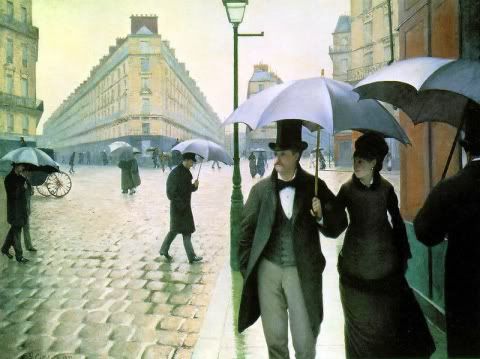Monet's work, called 'Impressionism' and got involved in a exhibition in Paris, gave the name of this movement.
Impressionist, have works outdoors and realizing them in the light of day, the painting was rescued from the artificial atmosphere of workshop.
According to the impressionists, the artist must base feelings and thoughts evoked by
what they see, and produce a personal interpretation to the fore
by throwing
realism and objectivity to the second plan .
In impressionism, literary work which is formed, carries the traces of the author's or the poet's personality because of that comment and impressions has changed from the artist to the artist and in his work, each artist expresses the emotion of itself.
There is no work of art about architecture as an impressionist point of view, but it can be mentioned about impressionist paintings of architectural structures at that time.
The urban landscapes produced by the impressionists are perhaps the most perfect expressions of the interdependence of leisure and productivity because city views were hardly new in art, but in impressionism urban landscape emerged as a significant genre.
In impressionism, suburban roads and city streets are themselves places of meaningful activity and they usually signified modernity to the 19th century viewer. In this paintings, like trains, roads suggest the freedom to travel and expand one's range. In focusing on manmade elements in landscape, impressionist paintings imply the extension of human control over nature through the creation of an infrastructure for transportation and commerce over and through it.
In city views the specificity of the modern landscape was far more visible and recognizable to the public than in suburban or country scenes, so the former were even better vehicles for redefining landscape painting.
Gustave Caillebotte, Paris Street: Rainy Day, 1877
There is no work of art about architecture as an impressionist point of view, but it can be mentioned about impressionist paintings of architectural structures at that time.
The urban landscapes produced by the impressionists are perhaps the most perfect expressions of the interdependence of leisure and productivity because city views were hardly new in art, but in impressionism urban landscape emerged as a significant genre.
In impressionism, suburban roads and city streets are themselves places of meaningful activity and they usually signified modernity to the 19th century viewer. In this paintings, like trains, roads suggest the freedom to travel and expand one's range. In focusing on manmade elements in landscape, impressionist paintings imply the extension of human control over nature through the creation of an infrastructure for transportation and commerce over and through it.
In city views the specificity of the modern landscape was far more visible and recognizable to the public than in suburban or country scenes, so the former were even better vehicles for redefining landscape painting.
Gustave Caillebotte, Paris Street: Rainy Day, 1877
The central figures in the development of Impressionism in France, listed alphabetically, were:
Frédéric Bazille (1841–1870)
Gustave Caillebotte (who, younger than the others, joined forces with them in the mid 1870s) (1848–1894)
Mary Cassatt (American-born, she lived in Paris and participated in four Impressionist exhibitions) (1844–1926)
Paul Cézanne (although he later broke away from the Impressionists) (1839–1906)
Edgar Degas (a realist who despised the term Impressionist, but is considered one, due to his loyalty to the group) (1834–1917)
Armand Guillaumin (1841–1927)
Édouard Manet (who did not regard himself, nor is he generally considered, as an Impressionist, but who supported the Impressionists and was a great influence on them), (1832–1883)
Claude Monet (the most prolific of the Impressionists and the one who embodies their aesthetic most obviously)[17] (1840–1926)
Berthe Morisot (1841–1895)
Camille Pissarro (1830–1903)
Pierre-Auguste Renoir (1841–1919)
Alfred Sisley (1839–1899)
Camille Pissarro, Hoarfrost, 1873, Musee d'Orsay, Paris
Representatives of the picture:
Auguste Renoir
Claude Monet
Van Gogh
Toulouse Leatrec
Sisley
Cezanne
Camille Pissarro
Representatives of Music
MRavel
CDebussy
JACarpenter
ORespighi
CTGriffes
IAlbéniz
PDukas
Representatives of Literature
Rilke
Arthur Rimbauld
James Jayce
Ahmed Hashim
Sahabettin Cenap
- An impression of the most important feature of the stream as needed to stimulate a reflection of feelings.
- Meaning is closed.
- The author of this trend, rather than directly sees the truth, and the sensation of having seen and are following is based on the impression he left on.
- It's more developed in literature and painting.
- they are not interested in external realm and its assets and objects.
- Impressionist artist didnt tell the outside world, but told the impressions of the outside world, clad in an ivory tower assets.
- Impressionism is mainly a symbol of freedom above all the symbols.
- Imaginary and abstract descriptions are given.
- Everything is explained, depending on the artist's sensation.
- Because of the importance of object's impact on people , it's the opposite of the realism.
- In their works, artists have expressed their inner worlds.


,_1873.jpg)

Hiç yorum yok:
Yorum Gönder